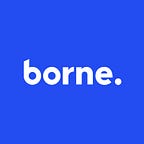Utilising Epics & User Stories in Agile Product Development
In the fast-paced world of agile product development, where time is of the essence, having a clear scope and roadmap is crucial for creating user-centric products. Epics and user stories are the guiding principles that enable development teams to understand what needs to be built and why. They serve as the lenses through which product development is viewed, emphasising the user’s needs and aligning them with the company’s strategic goals.
Understanding Themes, Epics, and User Stories
Themes, epics, and user stories form the foundation of agile product development. They provide a structured framework for planning, organizing, and managing product development tasks. These components are hierarchically structured, with themes at the top, containing epics, and epics housing user stories. This structure often starts with a theme and cascades down to epics and user stories, defining the scope for sprint planning and development.
Adapting Epics and User Stories in Agile Product Development
At Borne, and as a leading mobile app development company we employ a flexible approach to using epics and user stories based on the phase of the startup product build. In the early stages, when the product concept is still taking shape, our product development teams create themes, epics, and user stories to provide a clear picture of what must be developed from scratch. This clarity in scope is essential for effective roadmap planning and estimating the release of the first Minimum Viable Product (MVP).
As the MVP goes live and the product matures, we continue to leverage epics and user stories to outline the work for each sprint. Our dual-track agile product development process ensures that each user story is thoroughly reviewed and defined during Backlog Refinement meetings. This collaborative approach fosters a shared understanding, precise definition, and accurate estimation for each user story, empowering our teams to prioritise and develop effectively in each sprint.
For larger and more intricate startup product builds, themes, epics, and user stories may be supplemented with functional specifications. These detailed documents provide a more comprehensive view of the product, describing the functionality of all screens, and serve as a continuously updated product scope throughout development.
Tips for Crafting Effective Epics and User Stories
The ultimate goal of epics and user stories is to synchronize your team’s development efforts with both user needs and business objectives. These elements serve as guides, not mandates, in the product development journey. Drawing from our extensive experience in creating epics and user stories for numerous startup product builds, we offer the following tips:
Begin with the User: Write user stories from the perspective of the end-users, capturing their needs and aspirations. Developing a clear user persona can be a valuable aid in this process.
Simplicity is Key: Craft user stories in a way that’s easy to understand. Employ clear language, avoid ambiguity, and maintain an active voice.
Collaborative Creation: Involve the entire team in the process of crafting user stories. This not only enhances the quality of the stories but also deepens the team’s understanding of them.
Focus on the ‘Why’: The value that each piece of work brings to the user should be at the core of your user stories. This approach ensures that your team’s work consistently aligns with user needs and business goals.
Implement “Definition of Ready” and “Definition of Done”: These fundamental concepts in agile product development provide clarity on prerequisites (Definition of Ready) and quality benchmarks for completing a user story (Definition of Done). Together, they keep the product development process structured, transparent, and efficient.
Conclusion
Themes, epics, and user stories are the building blocks of agile product development, guiding teams as they create user-centric products. Combined with “Definition of Ready” and “Definition of Done” practices, these elements empower teams to effectively develop products that contribute to business objectives. At Borne, we have found that following these best practices is essential for successfully building products in the dynamic world of startups.
